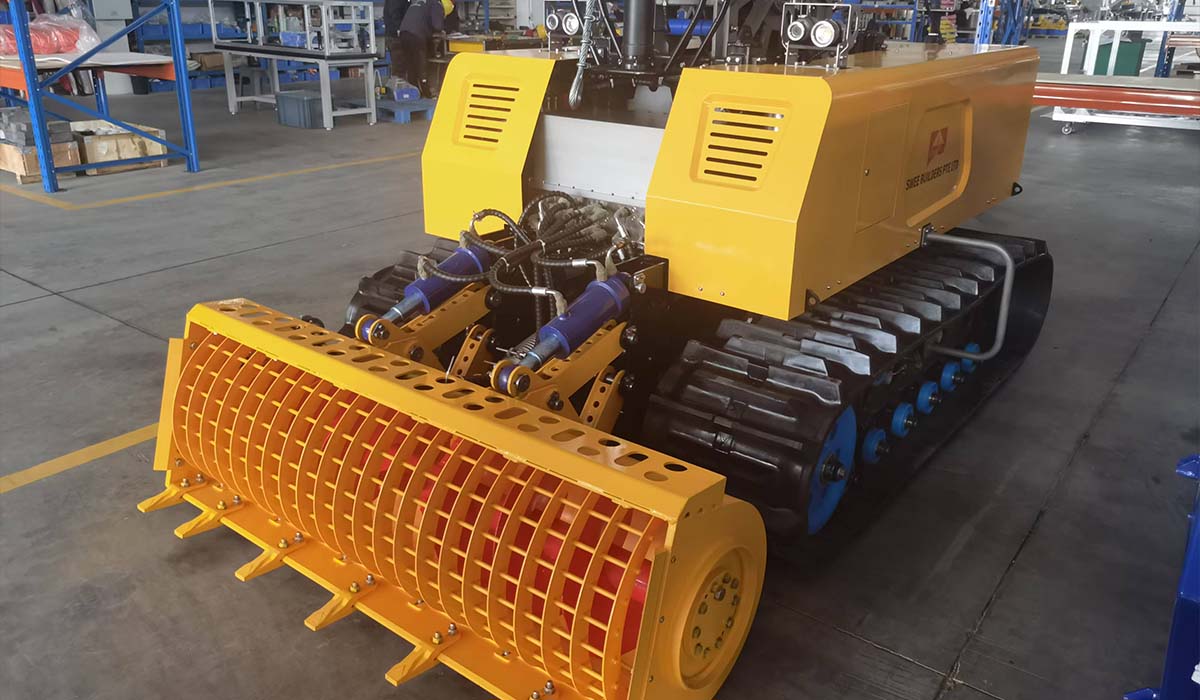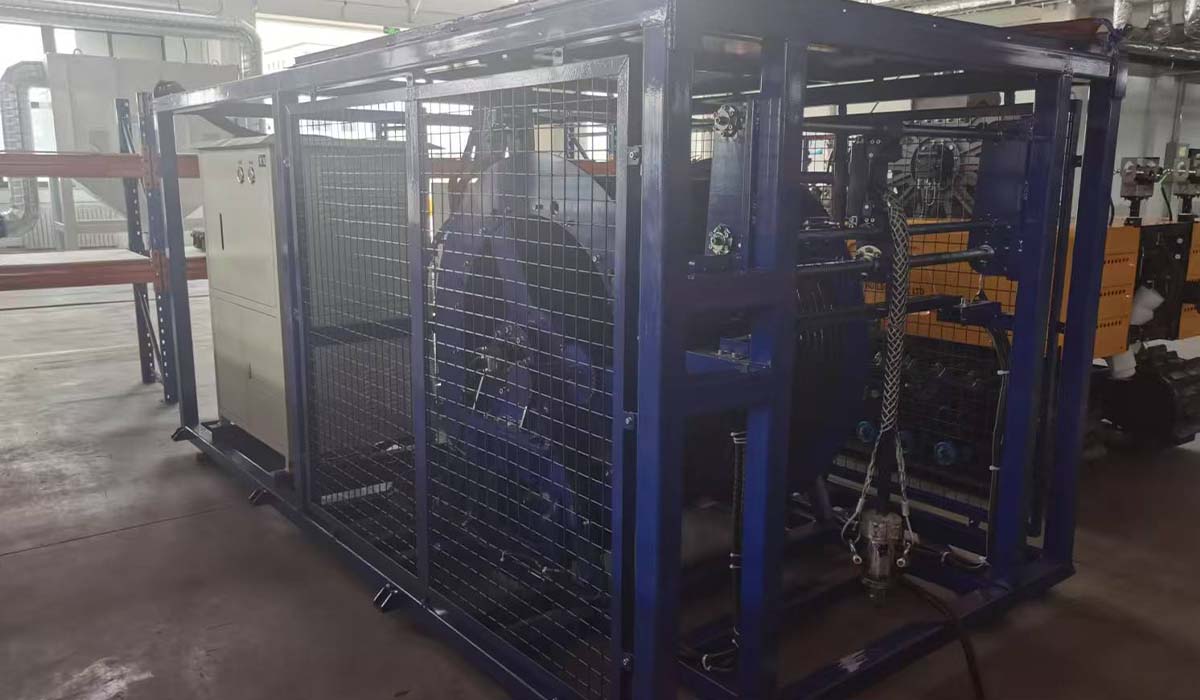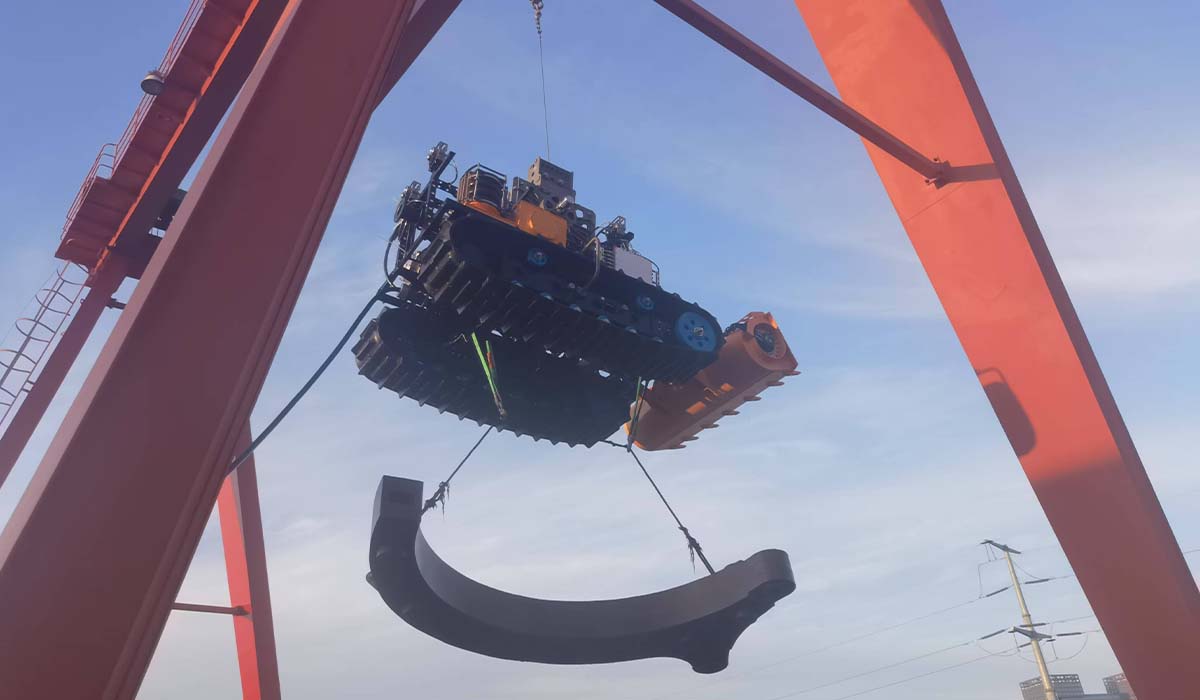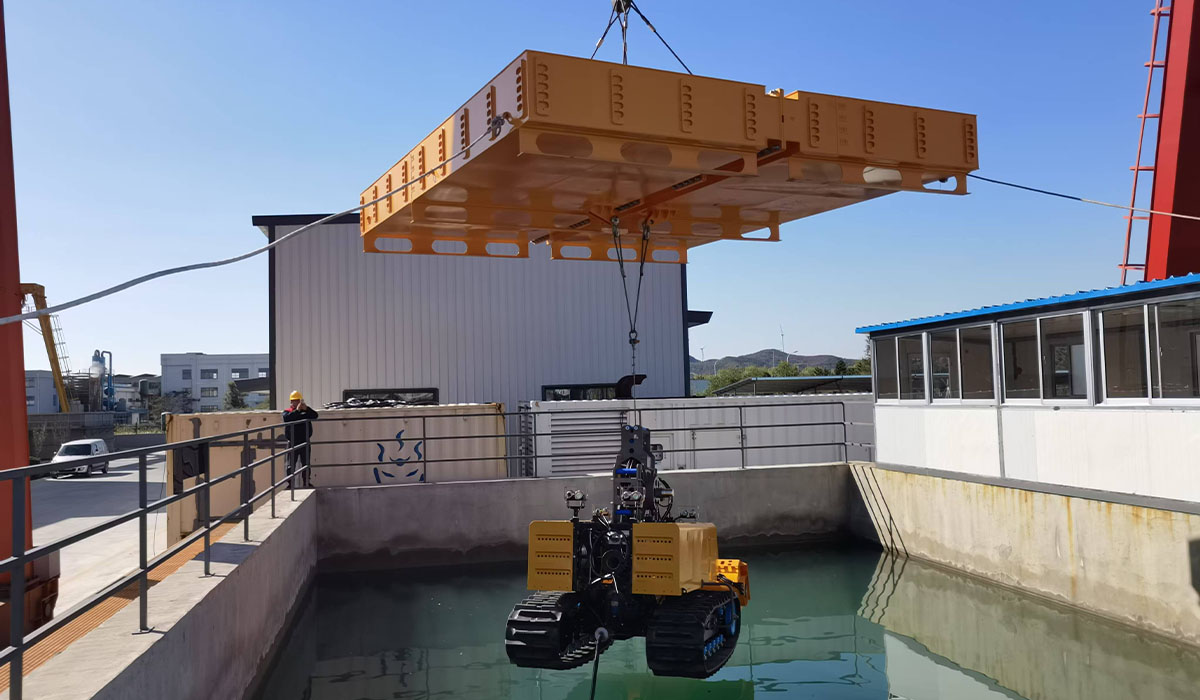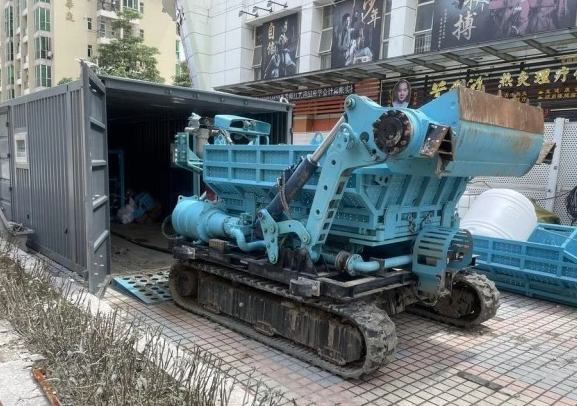VQY1800P Underwater Dredging Robot
The VQY1800P Underwater Dredging Robot is a high-efficiency automated dredging device specifically designed for underwater environments. It is ideal for addressing sediment accumulation in underwater areas such as ports, chemical plants, market drains, and reservoirs. With its powerful operational capabilities, the VQY1800P is an ideal choice for complex underwater dredging tasks, capable of working efficiently in varying water levels and environments.
Equipped with an independent underwater hydraulic power unit and a high-powered slurry pump, the robot is capable of effectively handling large particle sludge, while preventing blockages commonly associated with traditional suction pump systems. Its tracked mobility system ensures that the robot can move freely underwater, advancing, reversing, and turning with ease to navigate complex underwater terrain. The robot’s high-torque auger head and strong dredging capability enable it to quickly break up and clear compacted silt, further improving operational efficiency and effectiveness.
Key technical specifications of the VQY1800P include a 37kW power output, 25MPa working pressure, and a pump flow rate of 100m³/h, providing the robust power needed for deep-water operations. The slurry pump’s lift capacity reaches up to 25 meters, making it suitable for large-scale underwater dredging tasks. With its powerful pumping ability, excellent dredging performance, and highly customizable design, the VQY1800P offers an efficient, safe, and cost-effective solution for underwater dredging operations.
- Power37kw
- Working Pressure25MPa
- Slurry Pump Flow Rate100m³/h
- Slurry Pump Lift Capacity25m
- Drive SystemHydraulic
- Climbing Ability15°
- Movement Speed0-20m/min
- InterfacesCustomizable
